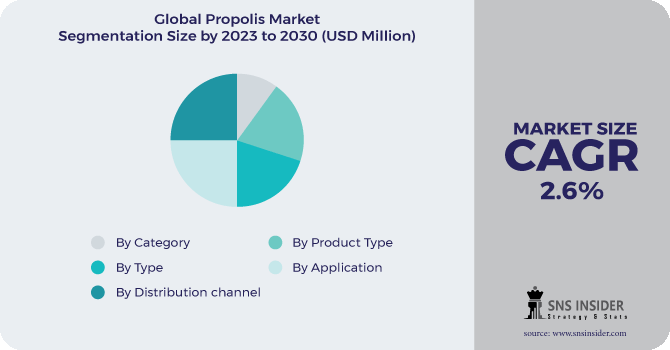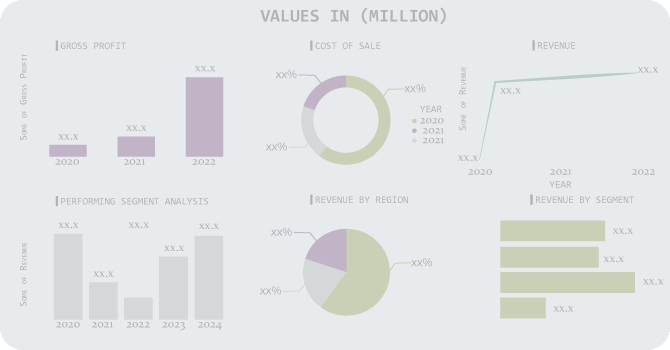Propolis Market Propolis Market Overview:
Propolis Market Size was valued at USD 655.51 million in 2022 and is expected to reach USD 804.93 million by 2030, and grow at a CAGR of 2.6% over the forecast period 2023-2030.
Propolis is a resinous combination made by bumblebees utilizing substances gathered from various pieces of plants, buds, and exudates. It for the most part contains dust, waxes, rejuvenating ointments, flavonoids, phenolic acids, and different natural mixtures, including sugars, steroids, nutrients, ketones, lactones, benzoic corrosive, and unsaturated fat esters. It is hard, fragile, lipophilic, and turns out to be delicate, flexible, sticky, and tacky after warming. It has a wonderful and trademark sweet-smelling scent and fluctuates in variety from yellow-green to dim brown as per its age and beginning. As propolis has cancer prevention agents and sedative and wound recuperating properties, fortifying the resistant system is broadly consumed.
.png)
It is a characteristic defense system made by honey bees to shield their hive from defilement. It capacities as a repairman and, subsequently, keeps the microbial improvement inside the hive taken care of. In light of propolis' expansive antibacterial, antifungal, antiviral, cytotoxic, quieting, and malignant growth counteraction specialist properties, it is generally utilized in the individual consideration, drug, and food and drink ventures.
Market Dynamics:
Driving Factors:
-
Developing extension interest from the clinical area.
-
Superstar supports and further developed bundling efforts.
Restraining Factors:
-
Rising instances of extreme touchiness because of propolis use.
Opportunities:
-
New item dispatches and item combinations.
Challenges:
-
The absence of normalization across different brands.
Impact of Covid-19:
The COVID-19 pandemic prompted the expanded interest in propolis for its practical properties. Notwithstanding, the inventory network of the market examined was tremendously impacted by the falling creation of propolis as a fixing. The COVID-19 lockdown has introduced a particular issue for beekeepers and honey bees. As nations go into broadened lockdowns, the development of unimportant vehicles has halted. Therefore, honey bee ranchers found it challenging to move their honey bee boxes starting with one spot and then onto the next, both cross country and globally, which brought about honey bees starving to death. This decreased honey bee fertilization and the creation of propolis. Additionally, the accessibility of restricted work power influenced the creation of finished results negatively affecting the propolis market.
Market Estimation:
The containers and tablets fragment ruled the market and represented the most noteworthy income share. These are generally liked by the clients as it is the least complex item sort of propolis. These are utilized to treat different illnesses and help in supporting the safe framework. The fluid item type fragment is supposed to enroll the most elevated development rate over the conjecture period because of expanding requests. Rising interest in fluid propolis items, developing dispensable salaries, and changing ways of life are different variables driving the business development. It likewise helps in further developing assimilation issues.
The retail location portion ruled the market and represented the most noteworthy income share in 2021. The interest for propolis is developing among clients because of more assortment presented by this retail location than some other conveyance channel types. Thus the portion is projected to show development during the evaluation time frame. The internet-based dissemination channel section is assessed to enlist the quickest CAGR from 2022 to 2028. Propolis can be bought at a low cost on a web-based dissemination channel. It additionally offers different advantages, for example, limits, coupon benefits, and different offers. Moreover, an assortment of propolis items with various brands can be effectively accessible on the internet-based stage. Thus, the fragment is assessed to show development over the figure period.
Key Market Segmentation:
By Product type:
-
Capsules & tablets
-
Spray
-
Extract
-
Others
By Distribution channel:
-
Store-based
-
Supermarkets & hypermarkets
-
Convenience stores
-
Others
-
Non-store-based
By Category:
-
Alcohol-based
-
Alcohol-free
By Application:
-
Food and beverages
-
Healthcare
-
Personal care
-
Cosmetics
-
Other
By Type:
-
Supercritical extraction co2 (sfe)
-
Ethanol extracted propolis (eep)
-
Glycol extracted propolis (gep)
-
Other

Regional Analysis:
-
North America
-
USA
-
Canada
-
Mexico
-
-
Europe
-
Germany
-
UK
-
France
-
Italy
-
Spain
-
The Netherlands
-
Rest of Europe
-
-
Asia-Pacific
-
Japan
-
south Korea
-
China
-
India
-
Australia
-
Rest of Asia-Pacific
-
-
The Middle East & Africa
-
Israel
-
UAE
-
South Africa
-
Rest of Middle East & Africa
-
-
Latin America
-
Brazil
-
Argentina
-
Rest of Latin America
-
North America overwhelmed the market and represented the biggest income share in 2021 because of the appeal for propolis in the U.S. also, Canada. Because of expanding instances of genital herpes in the U.S., its interest is seen ascending around here. The U.S. is among the top driving nations that have the most noteworthy instances of genital herpes and other herpes infections. Additionally, because of rising import interest, the business is supposed to observe earth-shattering development over the conjecture period.
In the Asia Pacific, the market is supposed to observe a CAGR of 3% from 2022 to 2028. This can be credited to the developing interest for propolis around here. An ascent in discretionary cash flow is further driving business sector development. Moreover, expanding instances of disease are additionally expected to speed up provincial market development. Subsequently, the propolis market is assessed to show development around here during the figure time frame.
Key Players:
Apiário Polenectar, Sunyata Pon Lee, Apis Flora, Sunyata Pon Lee, Bee Health Limited, Zhifengtang, Laprell's Beehive Products, Inc., Comvita Limited and its subsidiaries, Wax Green, Manuka Health New Zealand.
Apis Flora-Company Financial Analysis

| Report Attributes | Details |
|---|---|
| Market Size in 2022 | US$ 655.51 Million |
| Market Size by 2030 | US$ 804.93 Million |
| CAGR | CAGR 2.6% From 2023 to 2030 |
| Base Year | 2022 |
| Forecast Period | 2023-2030 |
| Historical Data | 2020-2021 |
| Report Scope & Coverage | Market Size, Segments Analysis, Competitive Landscape, Regional Analysis, DROC & SWOT Analysis, Forecast Outlook |
| Key Segments | • by Product Type (Capsules and Tablets, Liquids, Creams, and Other Product Types) • by Distribution Channel (Offline Retail Stores and Online Retail Stores) |
| Regional Analysis/Coverage | North America (USA, Canada, Mexico), Europe (Germany, UK, France, Italy, Spain, Netherlands, Rest of Europe), Asia-Pacific (Japan, South Korea, China, India, Australia, Rest of Asia-Pacific), The Middle East & Africa (Israel, +D11UAE, South Africa, Rest of Middle East & Africa), Latin America (Brazil, Argentina, Rest of Latin America) |
| Company Profiles | Apiário Polenectar, Sunyata Pon Lee, Apis Flora, Sunyata Pon Lee, Bee Health Limited, Zhifengtang, Laprell's Beehive Products, Inc., Comvita Limited and its subsidiaries, Wax Green, Manuka Health New Zealand. |
| Key Drivers | •Developing extension interest from the clinical area. •Superstar supports and further developed bundling efforts. |
| Market Challenges: | •The absence of normalization across different brands. |

